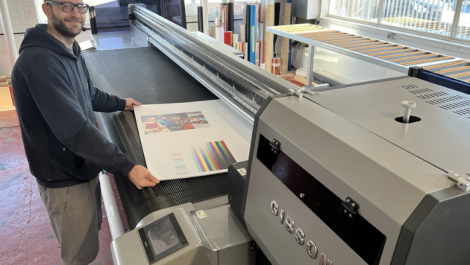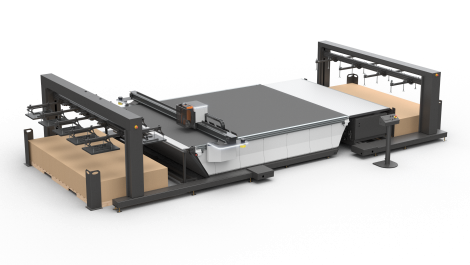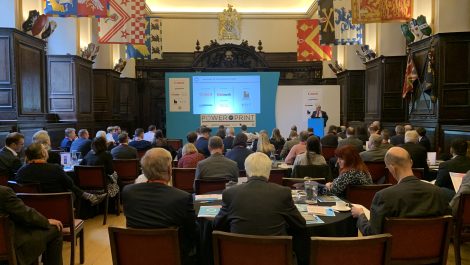EFI and newly-independent company eProductivity Software (EPS) used the second day of the Connect event in the US to launch new products, preview others and provide more detail on strategies for the coming year.
Speaking first for EPS, CEO Gaby Matsliach explained that ‘expansion and velocity’ were key to the new company’s plans. Noting the confluence of pandemic, labour and supply issues, he suggested that investment in transformational technology would produce greater benefits in an unpredictable environment and stressed the company’s expertise and aim to be ‘the right partner’.
On the product side, Mr Matsliach and Nick Bekovitch introduced updates to iQuote, Print Flow and Auto-Count, with the latter two gaining a ‘4D’ suffix that Mr Benkovitch explained represented the four ‘dimensions’ of integration with third-party software as well as EFI’s offerings (achieved via the eFlow connectivity ‘backbone’), automation based on rules-based logic, communication of real-time data across the enterprise and analysis of that data.
Updated user interfaces are intended to bring a ‘modern but familiar’ look not only to these ‘enabling applications’ but also to the Radius and Monarch ERP software at the heart of the Packaging and Enterprise Suites respectively, while also introducing a degree of consistency across all of them. This will be achieved via a ‘phased delivery’ but Mr Benkovitch reported that customers were excited to see the new look. The EPS line is moving into the Cloud but software licensing terms remain flexible to suit user requirements, according to Mr Matsliach.
On the EFI side, new products in the inkjet printer business include the Pro 30h, a sub-US $200,000 3.2m UV hybrid printer that prints at up to 1200dpi with 7pl drops and supports white ink for expanded application versatility, including high margin work such as printing on leather. Packaging is is key target sector for EFI this year and to support this, a new corrugated printer, the MCORR is being added to the Nozomi line. Expected in the spring, the new machine will be a shuttle design rather than a single-pass but will set the entry investment level around the $1 million mark, compared to $3 – $5 million for the Nozomis.
Scott Schinlever, COO of EFI’s global inkjet business, stressed the lessons learned from the experience of Nozomi users had resulted in significant reliability and uptime improvements. He also commented on the energy consumption benefits of LED UV curing, while acknowledging that the company would also be working on aqueous inks ‘in major ways’ to address food packaging applications. An aim for EFI in the packaging sector is to replace 10% of new offset and flexo placements within the next two or three years.
Updating on the Fiery part of the business, COO Toby Weiss said that during the quieter pandemic periods the engineers had ‘had their foot to the metal’ adding new features and improving performance in job execution, boot-up and user response time to meet increased pressures in production caused by the pandemic and labour shortage issues. A key new product is Fiery Impress, effectively a scalable and flexible off-the-shelf DFE solution for manufacturers with very specific applications and/or small numbers of units that would not normally be cost-effective for EFI to support via the normal OEM route; EFI will offer advice on which functionality is appropriate and anticipates selling to manufacturers of equipment in which imprinting is a secondary requirement. It is currently being tested at one such site and will be generally available ‘soon’.
The FS500 Pro is a new high speed DFE designed to support high speed cut-sheet and continuous feed inkjet presses, while Fiery Prep-It is a nesting and material optimisation tool for wide-format print that Mr Weiss said is now not only faster than previously but faster than any competing application. He also stressed the longer-term benefits of the Fiery platform in multi-printer sites, where the commonality of interface and operation makes bringing in new printers of any type simpler in terms of operator training and consistency of production and quality of output.





